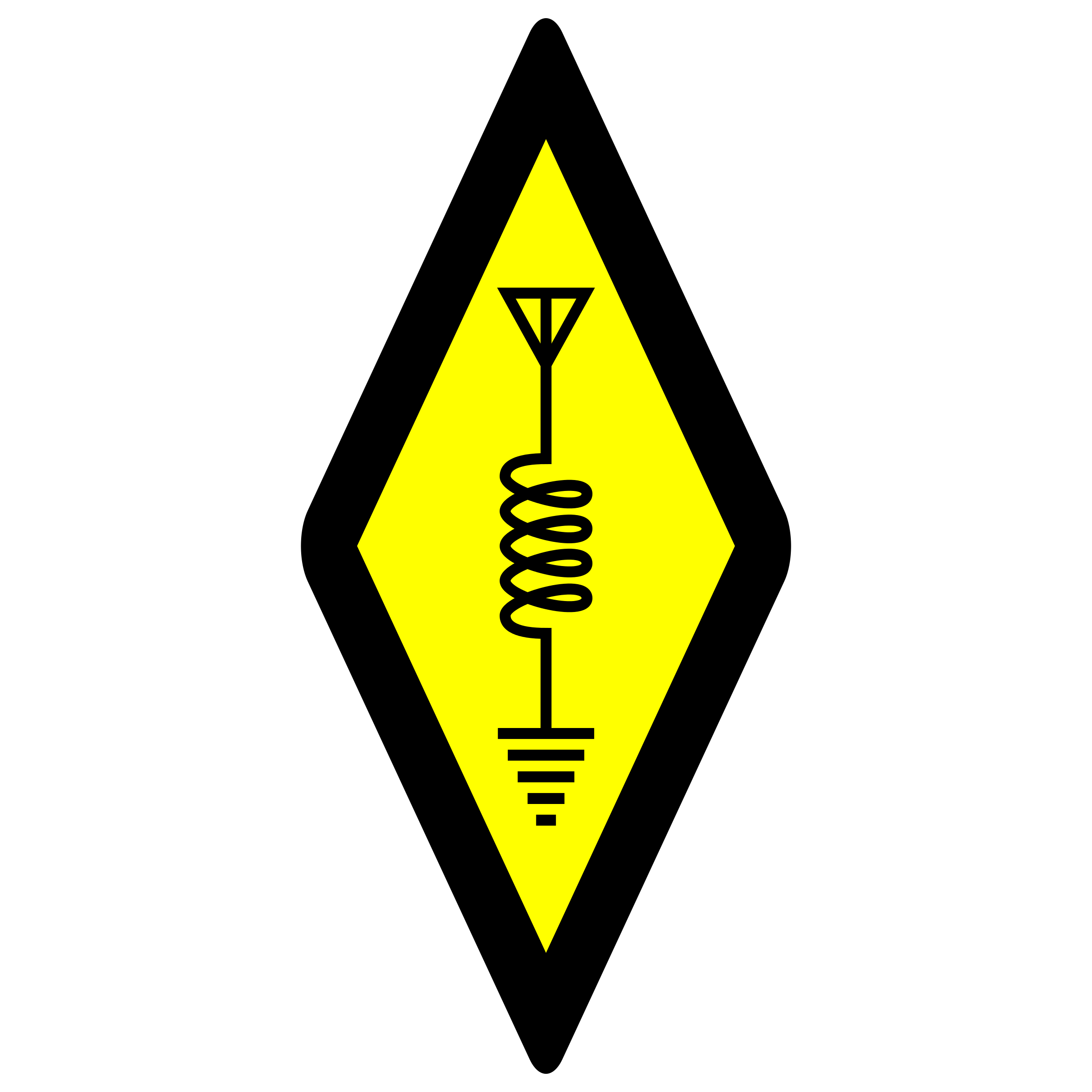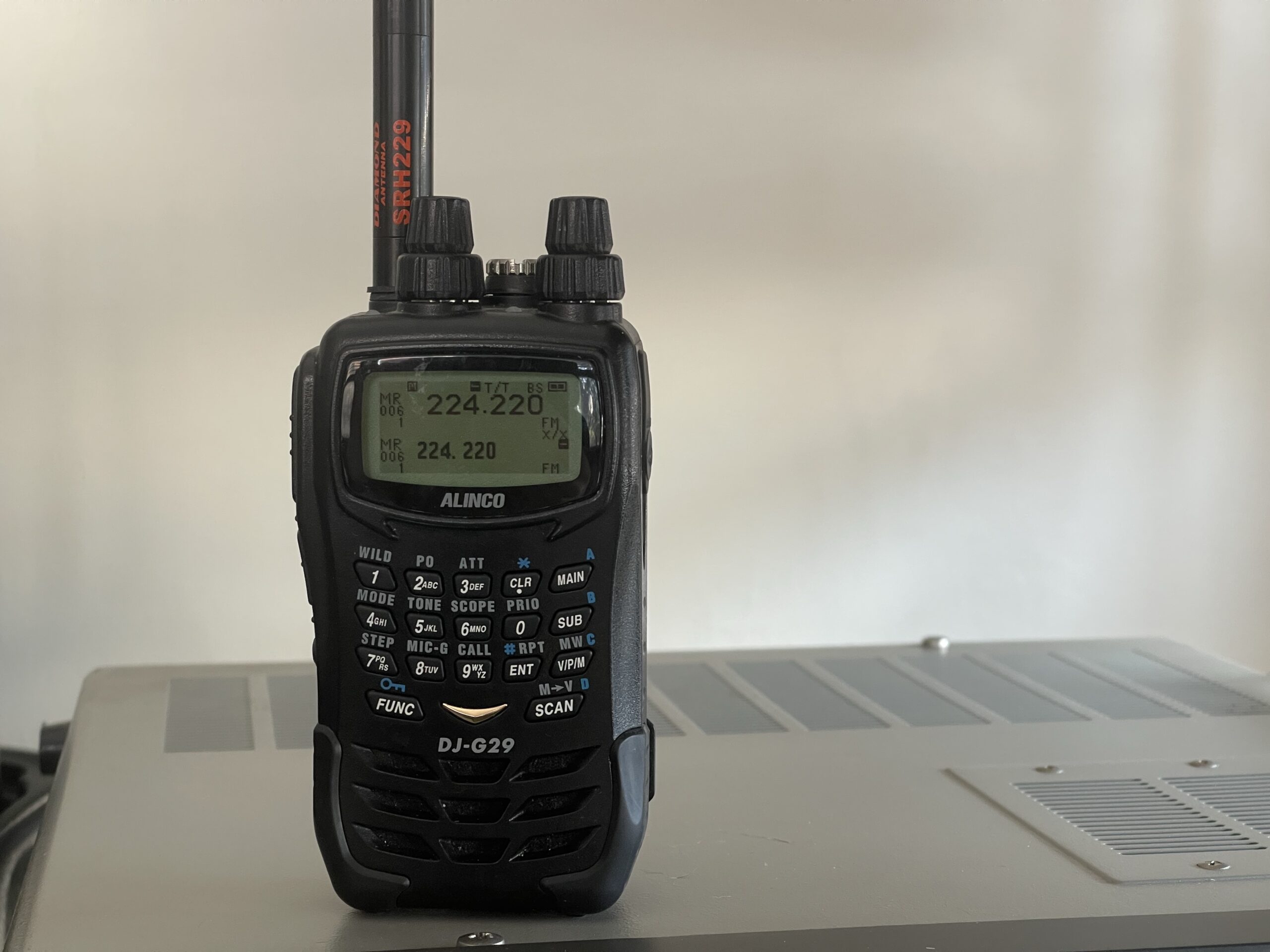
Alinco DJ-G29T for 33-cm Activity
The 33-cm band (902 MHz – 928 MHz) was allocated to amateur use in 1985, and is granted to amateur use on a secondary basis. This means amateurs can use the band, provided they do not interfere with primary uses and must accept interference from primary uses. In the 90s, 900 MHz cordless phones began to be used which overlapped with portions of this amateur allocation.
There happens to be some 33-cm activity (900 MHz) in my area, with about a dozen repeaters within 50 miles, and 3 within 25 miles. There is 1 repeater that is very close by (within about 15 miles), and it has a bit of activity on it.
There was only one HT (and quite possibly the only amateur transceiver) ever commercially produced and sold for the 33-cm amateur band, which is the Alinco DJ-G29. It is a dual band HT, also capable of operation on the 1.25-m band.
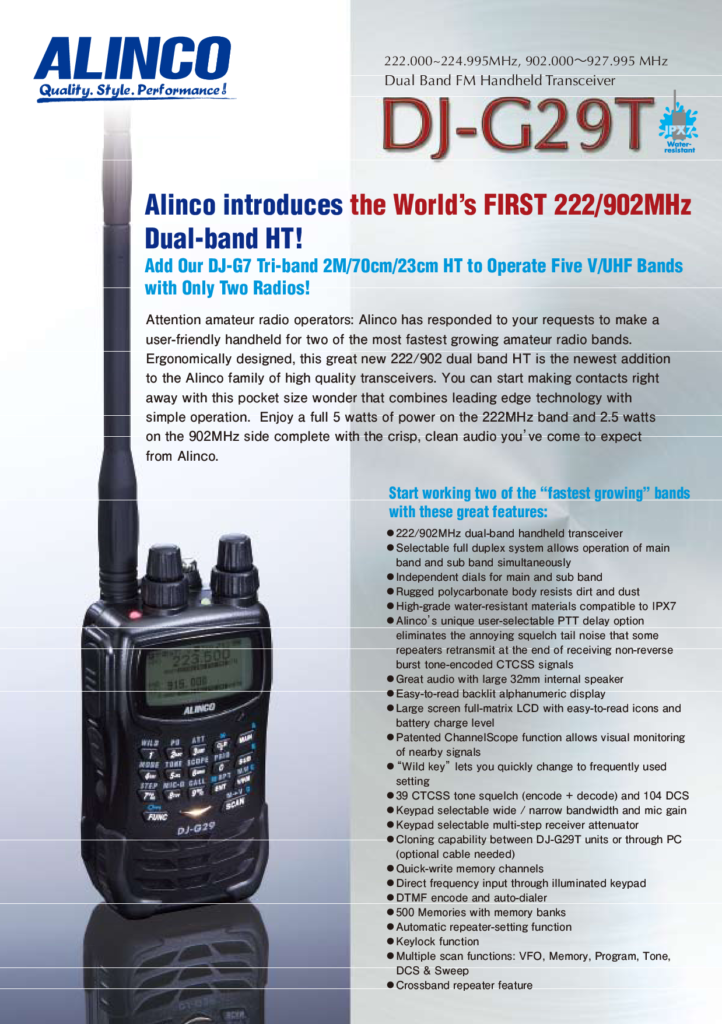
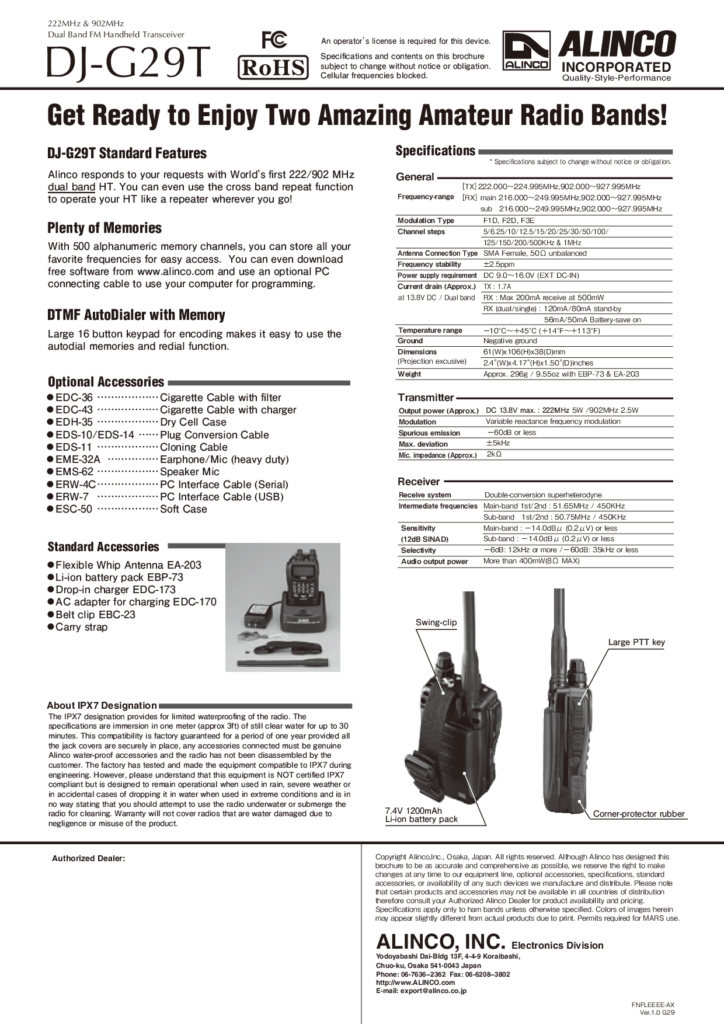
This model has been discontinued and they are not easy to find used. For those that do come up for sale, they command a price that is much higher than the typical HT on more popular amateur bands. I sought out one of these on eBay and I was willing to pay more than a reasonable amount for it (also see the Kenwood D74). If it wasn’t a dual band HT, I would not have been willing to spend that much for it, as it would have no other use except for the 33-cm band.
Perhaps the reason for its demise is that it covers the two least popular amateur bands in the United States. To make matters worse, these allocations aren’t common for amateur use worldwide either. This made the market for this HT extremely narrow.
Alternatives
There are some alternatives to this HT if you wish to operate on the 33-cm band. There are Motorola, Kenwood, and GE radios that can be programmed to operate on the amateur portion of the 900 MHz band (33-cm). However, these radios will require hardware and software, which can be a challenge or costly to obtain. Often times those that do have the software and hardware to program these radios will program the radios for others to help get them on the air.
These radios are and were sold for commercial use and to public service agencies. As such, these radios do not have a VFO as the typical amateur radio would. They do not allow direct frequency entry – they are channelized. This means they need to be programmed with the frequencies you plan to operate on.
If you know someone or find someone who has the hardware and software to program one of these radios (most often Motorolas), then this is a great option. However if you don’t know someone or don’t already have the hardware and software, acquiring it is an extra expense in addition to the radio you purchase. This is one of the reasons I chose to pay a bit more than usual for the DJ-G29.
Not being able to change frequencies and offsets on the fly may not be necessary, as you might have only a few repeaters and simplex frequencies that you would operate on. The only time you would need to reprogram the radio would be for travel for example.
An alternative to repurposing commercial radios for 33-cm usage would be to use a transverter. Clearly this option wouldn’t be as handy as a handheld option, but you may not need to operate portable. If you’re looking to operate from a fixed station, this might be the best option. A transverter would allow an HF rig, for example, to operate on this band, and, perhaps all modes. One thing to note would be to ensure the HF rig you use can do FM, as most repeater and simplex usage on 33-cm is FM.
W6AER put together a great summary of the options for the 33-cm band.
Form Factor
The DJ-G29 has the same form factor as the tri-band DJ-G7, which does 2 meters, 70-cm, and 23-cm. Since that HT is still in production, the accessories such as the lithium ion battery pack and AA holder (EDH-35), DC adapters and AC chargers can still be purchased and used with this version of the HT.
I picked up an EDH-35 AA battery holder and use it with EBL 1.5V AA lithium ion batteries.
Cross Band Repeating
The DJ-G29T version is capable of cross-band repeating. This would be handy if you set this HT up somewhere at an elevated altitude for example, and had other 1.25-m HTs which are also within range to work a 33-cm repeater, giving the 1.25-m HTs access to the repeater.
I’ve found this to be useful when I found a good spot inside the house for coverage to a local repeater on 33-cm such as upstairs, but wish to use the repeater when downstairs or outside. Using any 1.25-m HT would then be able to use the 33-cm repeater via cross-banding.
PC Programming
There is a programming package available for PC from RT Systems (I use their software for the FT-991A and the FT5DR) which includes the software and programming cable. However, Alinco published a “Clone Utility” program for windows, which can be downloaded for free from their web site. You can purchase a programming cable fairly inexpensively.
I purchased the EDS-14 adapter which plugs into the radio (4-conductor 3.5mm jack) and provides a 3.5mm and 2.5mm 3 conductor socket pair which allows for connecting a standard speaker mic or programming cable into the adapter. I also purchased a 2.5mm to 3.5mm adapter to connect my TYT 9000D programming cable (which has a 3.5mm jack) into the EDS-14.
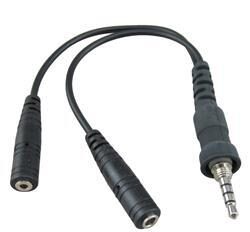
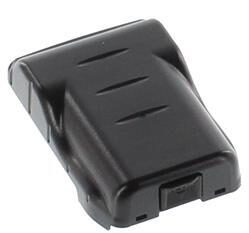
The programming mostly worked. I was able to read and write each individual tab of settings and selected memory banks, but was unable to read the entire radio memory using the Read All Data under the Communication menu. Reading and writing each tab individually is perfectly acceptable as it saves quite a bit of time verus manual programming on the front panel.
Speaker Mic
Using the EDS-14, I was able to connect a Yaesu MH-12 speaker mic to this HT. The pinouts on this speaker mic were compatible, while the Kenwood K1 style speaker mic did not work.
Final Thoughts
I’ve found this HT to be durable and up to par with other Japanese manufacturers in terms of quality and performance. It’s unfortunate that U.S. amateurs didn’t jump on the 33-cm bandwagon after this HT was released. I have a feeling that other manufacturers took note of the lackluster interest in this band and might be the reason no others have brought a 33-cm transceiver to the market since.
